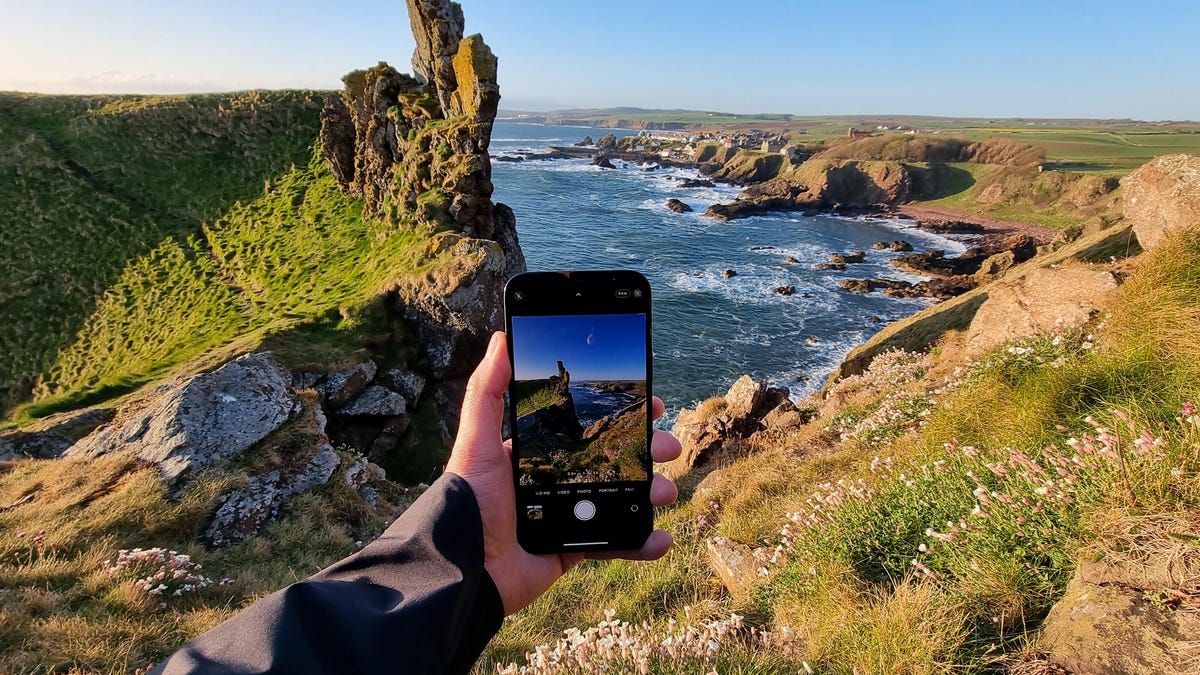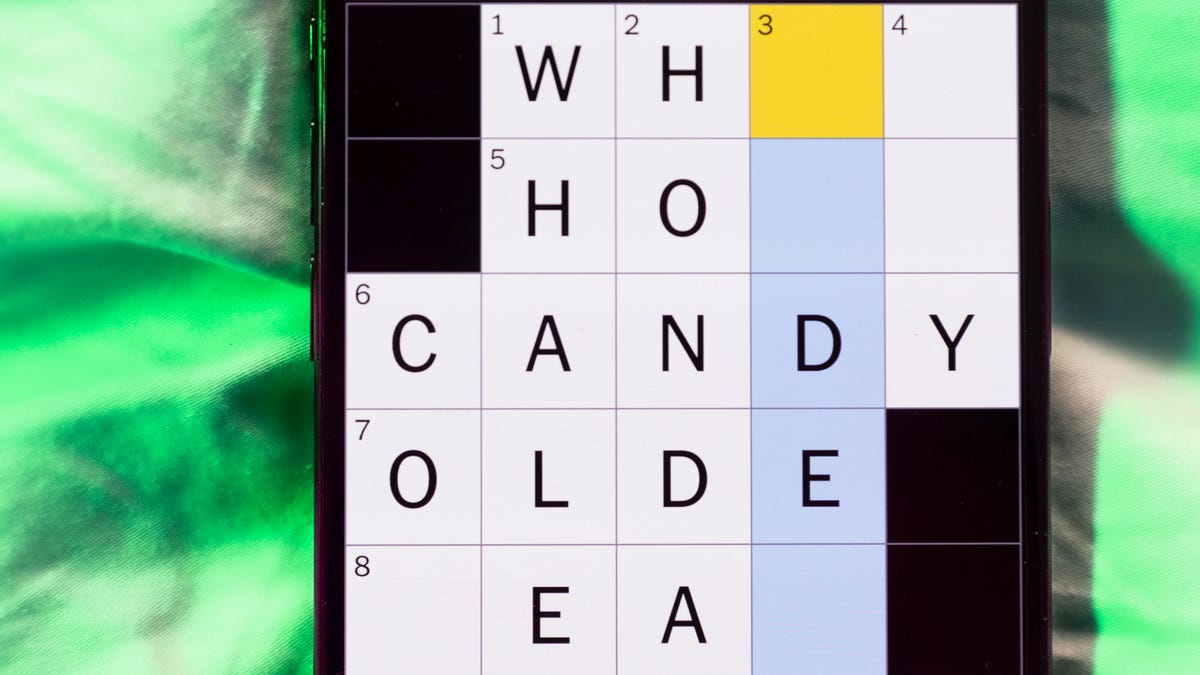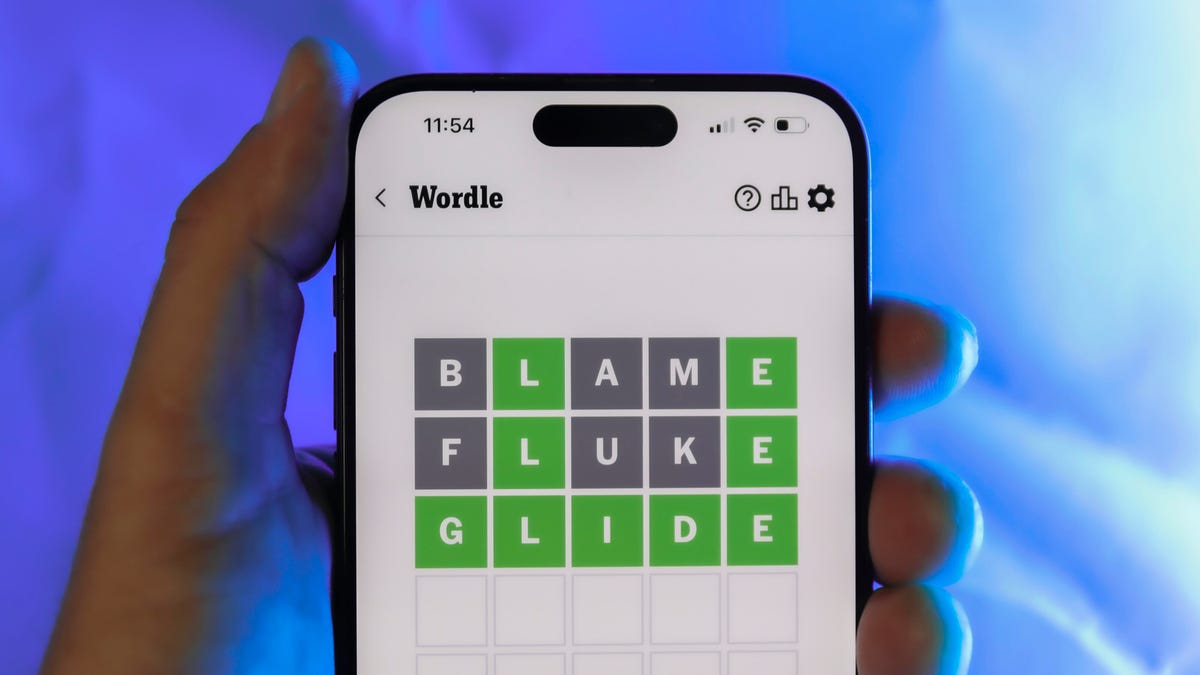Technologies
Take Stunning Landscape Photos With Your Phone Using These Pro Tips
Whether you have an iPhone or Android phone, these pro tips will up your landscape photography game.

Today’s best phones, such as the iPhone 15 Pro and Samsung Galaxy S24 Ultra, have amazing cameras that can take images that would make even the best cameras jealous. Even older or more affordable phones, like 2021’s iPhone 13 Pro or the new Google Pixel 8, can take beautiful images that you might want to print and display on your wall.
In this guide, I’ll show you how to take landscape photos with your phone, whether you’re heading into the countryside or deep into the heart of the mountains. While some of the tips apply to recent phones with multiple lens options, many are relevant whether your device is three months or three years old, Apple or Android.
Read more: Best Camera Phone to Buy Right Now
Sort your phone camera settings
Your phone is probably capable of taking a cracking landscape photo in its default auto mode, but let’s take things a bit further.
If your phone has a «pro» mode that gives you manual control of settings, switch into that. If it doesn’t, an app like Moment, Lightroom or MuseCam lets you take control of settings like ISO, shutter speed and white balance.
Crucially, these apps also let you shoot in raw format. Raw images don’t save many of the automatic camera settings that your phone would normally apply to a JPEG image, such as white balance or sharpening. The result is an image that lets you change the white balance, alter color tones and rescue detail from the highlights and shadows much more easily — and with less image degradation — than you can with a simple JPEG. I’ll come back to this more in the editing section below.
Apple’s last few generations of Pro iPhone can use the company’s ProRaw format, which uses some computational photography techniques like HDR blending but still generates an easily editable DNG file. Tapping the Raw button on the camera screen will turn on raw shooting. Google has a similar raw function built into its Pixel line.
In landscapes, altering white balance is often crucial as auto white balance might see a scene with a lot of warm tones (such as fall leaves on trees) and try to use a cool white balance to even it out, but in so doing, it loses all of that natural warmth. Being able to tone down some of the highlights from a bright sky or bring up the shadows in the foreground is important, and being able to alter your white balance after you’ve taken the shot gives you much more flexibility in your editing, rather than having the colors baked into the image when you take it.
The downside to shooting in raw is that your images will likely need some work in an editing app like Lightroom or Snapseed before you can share them. Photographing landscapes is often a slower, more methodical process, and spending time in editing is all part of the experience of crafting a beautiful image.
Shoot early, stay out late
Time of day is everything in landscape photography, because the lighting changes completely as the sun passes overhead. The best time of day to catch dramatic light is either at sunrise or at sunset. The sun is low in the sky both times of day, resulting in directional light and long shadows cast over the scene.
Midday is typically the worst time to shoot, as the overhead light doesn’t create much in the way of shadow detail, resulting in scenes that can look flat and lifeless.
If you have a particular location in mind, it’s worth setting your alarm and getting out early to see what you can capture during the sunrise. If time allows, try and return to shoot the same scene at different times of day to see when it looks best.
Watch the weather
Weather plays a huge part in any outdoor photography, but none more so than with landscapes. Different weather conditions will transform your scene, completely altering its mood, lighting and colors. But don’t assume that bad weather means bad photos.
Personally, I love the foreboding, moody atmosphere of a landscape with dark storm clouds billowing above. Often the light that comes after a storm can look particularly dramatic. So while the hike to your chosen location might be a miserable slog in pouring rain, keep your spirits up by imagining the beautiful photo you might get at the end.
The worst weather for landscapes is that plain, miserable gray sky where there’s no texture to the clouds, no interesting light on the land and no contrast to the scene in front of you.
Keep an eye on your favorite weather app and make the decision based on what’s predicted. As long as you’ve packed the right clothing, you can brave the worst of the weather, and if it gets too bad then navigate Google Maps to the nearest pub to sit it out with a good drink.
Experiment with your wide and zoom lenses
If your phone has a wide-angle mode, then now’s the time to give it a try. If you don’t have a wide mode on your phone as standard, you can use additional lenses to get the same effect.
Superwide landscapes can be particularly dramatic, as they capture so much of a scene in a single image. Mountaintops that would otherwise be out of frame are suddenly captured in all their majesty, while beautiful rivers can now be seen in their entirety, snaking their way into a scene.
But once you’ve had the excitement of seeing the scene in full, try using the telephoto zoom lenses on your phone to focus on some of the details within it. Look for interesting rock formations, patterns in the landscapes or unusual shapes in the scene — all of which can stand out when you zoom in or crop out other distracting elements.
Concentrate on composition
It’s easy to think that just using as wide an angle as possible is a guarantee of a cool landscape photo, but that’s not the case. In fact, to get the best out of your wide shots you need to think about composition even more.
Foreground interest
Look for foreground interest in your scenes. Tree stumps, moss-covered rocks, even some pretty wildflowers can all be used to draw the viewer’s eye into a scene. When you’re at the top of the hill taking your shot, spend a couple of minutes having a look around for something you can place in your shot to help bring the scene together.
Leading lines
Leading lines are also great elements of a brilliant landscape composition. Keep your eye out for pathways, nice walls or other long elements that wind their way farther into the scene — it’s exactly that winding perspective that allows your viewer’s eye to follow along a line and into your image.
Straight horizons
If your phone shows grid lines or a leveling tool on the screen, use that to make sure your horizon line is straight. Then double-check you’re not accidentally chopping the top off your subject, be it a mountain, a building or some trees. Remember, you can do a lot to improve a mediocre image with editing, but you can’t do anything to rescue bad composition.
Edit your photos
Your image isn’t finished once you’ve hit that shutter button; a few tweaks in an editing app is all it can take to transform a simple snap into a beautiful piece of art.
My favorite editing app is Adobe Lightroom Mobile, but I also get great results from Google’s Snapseed, which you can get for free on Android and iOS. You can check out my roundup of the best editing apps, which include various options for those of you who like to get a bit wild with your editing.
I tend to start by tweaking the white balance so the colors look accurate, or to give a warmth boost to a beautiful sunset. It’s here that shooting in raw becomes particularly beneficial. I’ll tweak the exposure levels, particularly the highlights and shadows, in order to bring a bright sky a bit more under control or to boost shadows in the foreground. A bit of additional contrast can help add some punch to the scene as well.
My advice is to make a coffee, sit back and play with the sliders in your chosen app to your heart’s content. Try out the different filters and experiment with layering different effects on top of each other by saving and reimporting your image. Remember that there’s no right or wrong way to edit an image, so enjoy playing around — you can always go back to the original image if you don’t like what you’ve come up with.
Technologies
Today’s NYT Mini Crossword Answers for Saturday, Dec. 27
Here are the answers for The New York Times Mini Crossword for Dec. 27.

Looking for the most recent Mini Crossword answer? Click here for today’s Mini Crossword hints, as well as our daily answers and hints for The New York Times Wordle, Strands, Connections and Connections: Sports Edition puzzles.
Need some help with today’s Mini Crossword? It’s pretty long for a Mini Crossword, and some of the clues are tricky. The answer to 10-Across is not an expression I use, for sure. Read on. And if you could use some hints and guidance for daily solving, check out our Mini Crossword tips.
If you’re looking for today’s Wordle, Connections, Connections: Sports Edition and Strands answers, you can visit CNET’s NYT puzzle hints page.
Read more: Tips and Tricks for Solving The New York Times Mini Crossword
Let’s get to those Mini Crossword clues and answers.
Mini across clues and answers
1A clue: Fashionable
Answer: HIP
4A clue: Product sold on «The Office»
Answer: PAPER
6A clue: One writing a performance review
Answer: MANAGER
8A clue: With 5-Down, redundant synonym of «outcome»
Answer: END
9A clue: Quiet ___ mouse
Answer: ASA
10A clue: Gives constant compliments, in slang
Answer: GASESUP
12A clue: Ski mountain bump
Answer: MOGUL
13A clue: Uneasy feeling
Answer: ANGST
Mini down clues and answers
1D clue: Personally involved
Answer: HANDSON
2D clue: Hoppy beer, for short
Answer: IPA
3D clue: Mythical horse whose name is an anagram of 10-Across
Answer: PEGASUS
4D clue: Last word in the palindromic sentence «A man, a plan, a canal …»
Answer: PANAMA
5D clue: See 8-Across
Answer: RESULT
6D clue: Ryan of «When Harry Met Sally …»
Answer: MEG
7D clue: Genre for Playboi Carti and Cardi B
Answer: RAP
11D clue: Something in an Easter basket
Answer: EGG
Don’t miss any of our unbiased tech content and lab-based reviews. Add CNET as a preferred Google source.
Technologies
Today’s NYT Connections: Sports Edition Hints and Answers for Dec. 27, #460
Here are hints and the answers for the NYT Connections: Sports Edition puzzle for Dec. 27, No. 460.

Looking for the most recent regular Connections answers? Click here for today’s Connections hints, as well as our daily answers and hints for The New York Times Mini Crossword, Wordle and Strands puzzles.
Today’s Connections: Sports Edition is a real challenge. That purple category wants you to hunt out something related in four different words, and it’s a toughie. If you’re struggling with today’s puzzle but still want to solve it, read on for hints and the answers.
Connections: Sports Edition is published by The Athletic, the subscription-based sports journalism site owned by The Times. It doesn’t appear in the NYT Games app, but it does in The Athletic’s own app. Or you can play it for free online.
Read more: NYT Connections: Sports Edition Puzzle Comes Out of Beta
Hints for today’s Connections: Sports Edition groups
Here are four hints for the groupings in today’s Connections: Sports Edition puzzle, ranked from the easiest yellow group to the tough (and sometimes bizarre) purple group.
Yellow group hint: Something you save.
Green group hint: An Olympic sport.
Blue group hint: Toronto pitchers.
Purple group hint: Think about the alphabet and look for something hidden.
Answers for today’s Connections: Sports Edition groups
Yellow group: Memento.
Green group: Types of wrestling.
Blue group: Blue Jays to win Cy Young Award.
Purple group: Ends in a homophone for a letter of the alphabet.
Read more: Wordle Cheat Sheet: Here Are the Most Popular Letters Used in English Words
What are today’s Connections: Sports Edition answers?
The yellow words in today’s Connections
The theme is memento. The four answers are collectible, keepsake, memorabilia and souvenir.
The green words in today’s Connections
The theme is types of wrestling. The four answers are arm, freestyle, Greco-Roman and sumo.
The blue words in today’s Connections
The theme is Blue Jays to win Cy Young Award. The four answers are Clemens, Halladay, Hentgen and Ray.
The purple words in today’s Connections
The theme is ends in a homophone for a letter of the alphabet. The four answers are batter’s eye (I), blue jay (J), golf tee (T) and pool cue (Q).
Don’t miss any of our unbiased tech content and lab-based reviews. Add CNET as a preferred Google source.
Technologies
Today’s Wordle Hints, Answer and Help for Dec. 27, #1,652
Here are hints and the answer for today’s Wordle for Dec. 27, No. 1,652.

Looking for the most recent Wordle answer? Click here for today’s Wordle hints, as well as our daily answers and hints for The New York Times Mini Crossword, Connections, Connections: Sports Edition and Strands puzzles.
Today’s Wordle puzzle came together pretty quickly for me this time. If you need a new starter word, check out our list of which letters show up the most in English words. If you need hints and the answer, read on.
Read more: New Study Reveals Wordle’s Top 10 Toughest Words of 2025
Today’s Wordle hints
Before we show you today’s Wordle answer, we’ll give you some hints. If you don’t want a spoiler, look away now.
Wordle hint No. 1: Repeats
Today’s Wordle answer has no repeated letters.
Wordle hint No. 2: Vowels
Today’s Wordle answer has one vowel.
Wordle hint No. 3: First letter
Today’s Wordle answer begins with B.
Wordle hint No. 4: Last letter
Today’s Wordle answer ends with H.
Wordle hint No. 5: Meaning
Today’s Wordle answer can refer to a quantity of goods produced at one time.
TODAY’S WORDLE ANSWER
Today’s Wordle answer is BATCH.
Yesterday’s Wordle answer
Yesterday’s Wordle answer, Dec. 26, No. 1651 was SPEED.
Recent Wordle answers
Dec. 22, No. 1647: CONCH
Dec. 23, No. 1648: GLINT
Dec. 24, No. 1649: SPOOL
Dec. 25, No. 1650: PRISM
Don’t miss any of our unbiased tech content and lab-based reviews. Add CNET as a preferred Google source.
-

 Technologies3 года ago
Technologies3 года agoTech Companies Need to Be Held Accountable for Security, Experts Say
-

 Technologies3 года ago
Technologies3 года agoBest Handheld Game Console in 2023
-

 Technologies3 года ago
Technologies3 года agoTighten Up Your VR Game With the Best Head Straps for Quest 2
-

 Technologies4 года ago
Technologies4 года agoBlack Friday 2021: The best deals on TVs, headphones, kitchenware, and more
-

 Technologies4 года ago
Technologies4 года agoVerum, Wickr and Threema: next generation secured messengers
-

 Technologies4 года ago
Technologies4 года agoGoogle to require vaccinations as Silicon Valley rethinks return-to-office policies
-

 Technologies4 года ago
Technologies4 года agoOlivia Harlan Dekker for Verum Messenger
-

 Technologies4 года ago
Technologies4 года agoiPhone 13 event: How to watch Apple’s big announcement tomorrow
